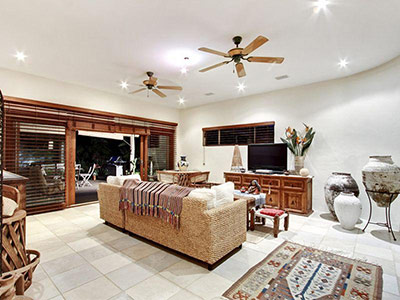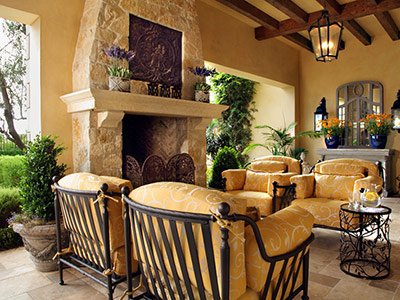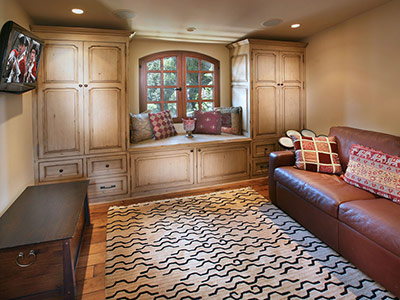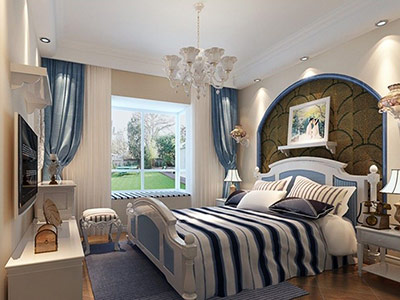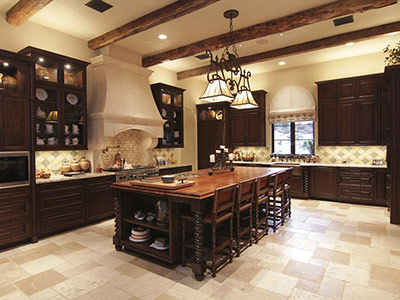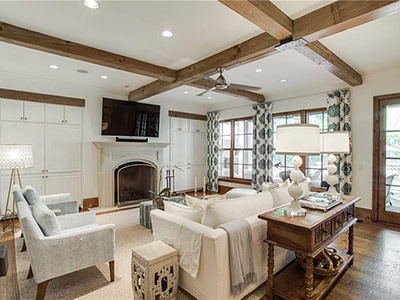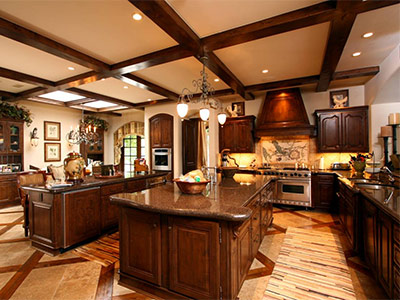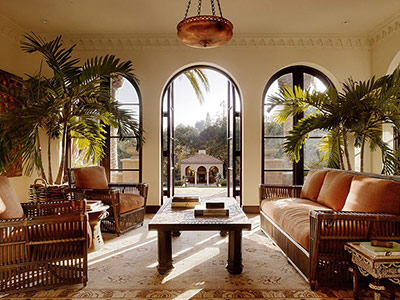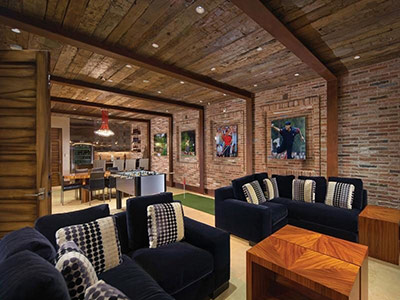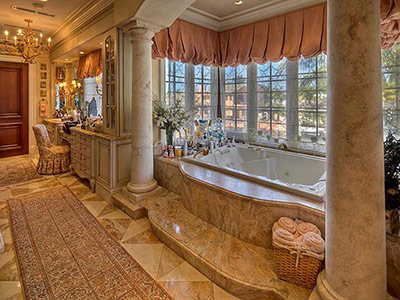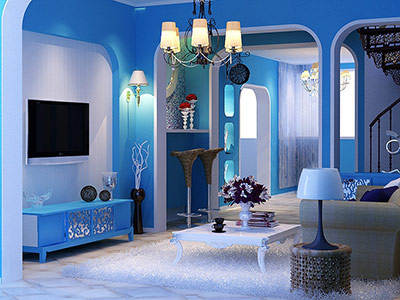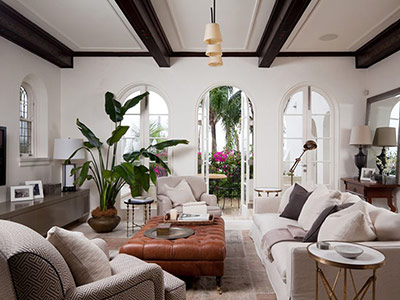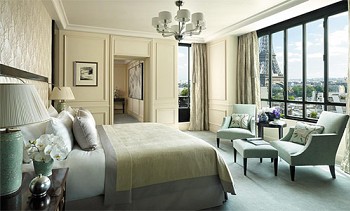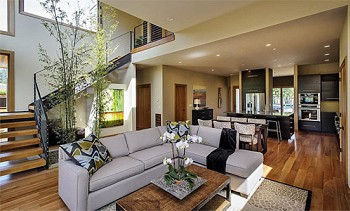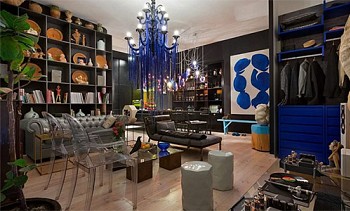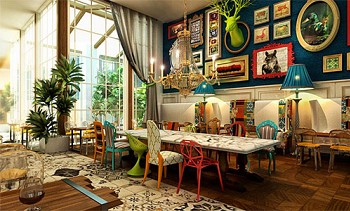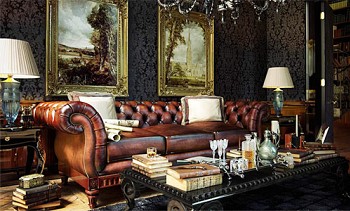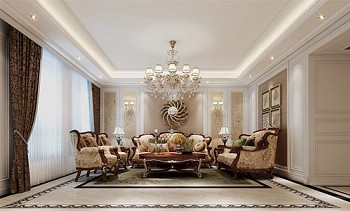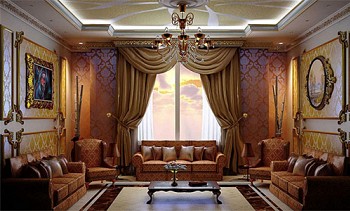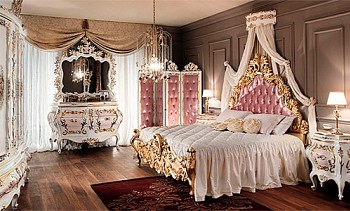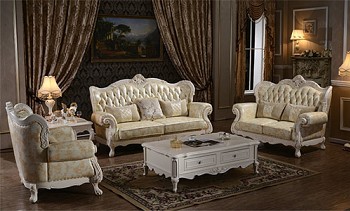Mediterranean style in the interior - tips, rules and design options
Lightness, freshness, natural colors combined with thoughtfulness and practicality - all this is the Mediterranean style in the interior, which has so quickly gained popularity around the world. It is used for decoration of country houses and villas, apartments and even office premises. This style deserved such “popular” love justifiably: low financial costs, beauty and ease of arrangement made it accessible to a wide segment of the population.
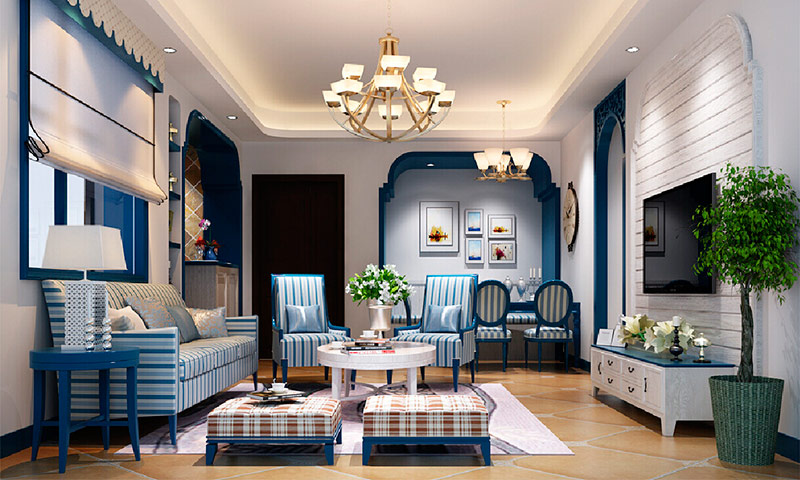
Content:
- Style History
- Features of the Mediterranean style and its varieties
- Mediterranean color scheme
- Wall decoration and design
- Decoration and design of ceilings
- The right selection of furniture
- Textile
- Lighting organization
- Decor and accessories in the Mediterranean style
- Photo examples of interior decoration in the Mediterranean style
Style History
The Mediterranean style is literally saturated with brackish sea air, permeated by warm sunshine and filled with fresh foliage. Greece and Spain, Algeria and Morocco, Turkey and the north of Egypt, France and Italy - so different, but at the same time similar in terms of colors and moods of culture, have become the territorial and historical “ancestor” of this wonderful direction in the interior. But the basic concepts of style owe the Greek and Italian ideas of conciseness, simplicity, convenience.

The room is in the classical Greek style.

Moroccan mood in a Mediterranean style.

Italian vision of the Mediterranean manner.
Features of the Mediterranean style and its varieties
The key to the Mediterranean interior design is ease in everything. In this style there is no place for luxury, extravagant accessories, elaborate decor and ornate furniture. It is distinguished by thoughtful details, functionality, simplicity and accessibility, and this is similar to the classic country. All the natural gifts of the Mediterranean are reflected in fresh colors, forms, tones and ornaments, and the atmosphere of style is saturated with romance and warm light.
There are several areas in the Mediterranean style of the interior, which are similar in abundance of the sun, natural materials and natural shades of nature. But the main varieties that set the tone for all other options are considered the Greek and Italian manner of arrangement.
Greek Mediterranean style
The main colors of this direction are white, lemon yellow, emerald green and the entire spectrum of cyan and blue. Although these colors are considered cold shades, the mood of the rooms is sunny and bright. Accents in the Greek, or, as it is also called, Cycladic style are white-blue stripes and inserts of saturated pink or red. It can be textiles and furniture, ceramics and glass, dishes and any other accessories. The combination of blue and white, recalls not only the vast coastal distances, but also the national pride of this country - the Greek flag.
Another hallmark of the Cycladic manner is the alternation of shades. Even furniture from one headset can be painted in different colors, but it is located in a strict order. In general, this style is inherent in consistency and accuracy, although in the completed image there is not a hint of careful, even pedantic, observance of any rules.
Black is often found in this Mediterranean style of interior, but only in the form of separate accessories: glass bottles on an open shelf or photo frames on a white wall. Such small, but precise accents refresh the room even more, put a kind of “point” in the design.
In bathrooms, this style is usually limited to laconic blue-white or greenish ceramic tiles and minimal, but bright decor. The ideas are the same: open space, freshness, floral ornaments and a lot of light.

The role of bright accents is performed by red-pink flowers.

Many pillows of different colors create a certain order.

The classic version with accents in black.

As a bright decor, a decorative window and a seascape are used.
Italian Mediterranean style
Unlike the Greek "relative", this style gathered only warm, soft shades: bright yellow, orange, green, olive, the entire gradation of brown and golden. In combination with brickwork or imitation thereof, these tones create an incredibly comfortable mood and make the room interesting.
As accents in the Italian Mediterranean design, handmade elements are used: mosaics and paintings on walls or floors, intentionally created by roughness and unevenness. Furniture for this direction is selected forged or wooden, even massive, but comfortable.
Often in one room several design options coexist: mosaic, and drawings, and bright floor tiles, and brick inserts. Despite the fear that such a combination will become a pile of accents, the Italian Mediterranean style looks very advantageous and original.
And the final touch of this style is the large windows. Even in the bathroom, a window opening must be present, letting in air and natural light, or imitating it.

Incredibly soft tones of the Italian style for the dining room.

Mosaic floors and imitation brickwork combine perfectly.

Mosaic elements, brickwork and decorative stucco in one room.

Classical Italian design of a bathroom with windows.
Mediterranean color scheme
The basic colors of the general style are represented by a spectrum of natural shades: from white, yellow and golden, to deep, like the Mediterranean Sea itself, blue and green. The Greek design is dominated by blue and white accents; brick, dark green bottle and deep yellow tones reign in the Italian direction. Insertions of other spectra are allowed, mainly in harmony with the basic background, but in the form of certain decor elements. For example, ceramic vases, decorative plates or bottles, cushions or flower pots.

Brown range in the design of the Italian room.

White and blue classical gamma in the Greek style.
Wall decoration and design
Greek Mediterranean-style interior design is usually based on white walls. They, like a blank sheet in the artist's album, allow you to create unique ornaments from blue, blue and green inserts. The wall decoration material is decorative plaster or paint. Another feature of this area is the use of wood panels. Usually they are painted in a special way in bright colors, which are very favorably in harmony with the general background. It seems that these wooden canvases have spent more than one year under the scorching Mediterranean sun, absorbing the sea salt and the spirit of Greece.
The Italian direction is characterized by dull, often with deliberate bumps, walls. A popular finish is stucco. This is a variant of decorative plaster, in which there are small particles of marble, gypsum, lime and water. Coarse at first glance, the material looks just great, highlighting the elements of decor and furniture.
Another interesting way of decorating the walls, typical of the Italian Mediterranean style, is painting the surface with superimposing several layers of shades from one spectrum. This design creates natural shadows and great simulates the play of light, which gives the room even more charm and sophistication.

The union of mosaics and stucco in the design of the kitchen.

Stucco is in perfect harmony with raw wood and linen textiles.

Wood panels combined with painted walls.
Decoration and design of ceilings
Like walls, Mediterranean-style ceilings are customary to make discreet, neat and simple. In the Greek direction, paint or plaster is usually used, and color schemes remain unshakable: white-blue, blue and greenish tones. The Italian style implies on the ceiling textured plaster of a standard color scheme, which necessarily resonates with the walls.
The key point in this design is wooden beams, which can simply be painted on suspended ceilings. Real logs are sometimes painted, but more often left in their original form. They not only serve as a kind of decor element, but also help to raise the ceiling, visually making the walls higher and the room larger.

Greek-style white wooden ceilings with exposed beams.

Stretch ceiling with imitation of wooden planks.

The classic design of the ceilings in the Italian style.
The right selection of furniture
Unlike other areas that require compliance with certain canons in furniture issues of interior design, the Mediterranean style is flexible. The main conditions are simplicity and functionality. Even massive wardrobes and chests of drawers should be easy to operate and easy to design. A minimum of ornate and unnecessary details is the advantage of furniture in this style.
The main material for furniture is strong and durable wood - stained oak, spruce, pine. Each product is usually processed and assembled by hand. An indispensable furniture attribute of this manner is wooden chests, which serve as an excellent container for things and support the "sea" spirit of the room.
As for the color scheme of furniture, in addition to natural woody shades, traditional style shades are welcome. And in the Italian version, forged products are often found that perfectly fit into the general Mediterranean surroundings.

An elegant combination of wood and leather furniture.

The rough, untreated wood looks very appropriate in the Mediterranean interior.

An interesting solution: a chest instead of a coffee table.
Textile
As with furniture, textile products have not an aesthetic, but a practical role. Therefore, the fabrics are selected mainly natural, and the color scheme remains concise. At the same time, there are much fewer textile accessories in the Mediterranean style than in the classics, empire or country. Basically, the fabric is found in the form of towels, tablecloths, bedding and bedspreads. As a rule, these products are either plain, light, or decorated with plain ornaments in traditional shades. But plant motifs and geometric shapes almost never occur.
As for the curtains, it is preferable to use Italian or Roman curtains. But modern trends brought to the Mediterranean design and familiar blinds, however, made of wood or bamboo. But curtains in their usual form are extremely rare.

Different-sized pillows serve as an excellent decoration.

The traditional color palette of textiles in the Greek direction.

Italian curtains in a Mediterranean style.
Lighting organization
Since sunlight is one of the concepts of interior design in a Mediterranean style, you should not save on lighting. A good option is ceiling spotlights and lamps hanging from wooden beams. The number of such devices can be unlimited, which will create an imitation of daylight even at night.
A variety of wall and floor lamps look advantageous, and table lamps will not be superfluous. Another interesting solution is LED strips located around the entire perimeter of the ceiling. In combination with standard devices, they will illuminate the room well, and in the dark, this tape is convenient to use for a night lamp.

Ceiling spots, a chandelier and candles - all aimed at bright lighting.

Union of wall, ceiling and table lamps.
Decor and accessories in the Mediterranean style
It is the elements of jewelry and decorative design that create the indescribable atmosphere of the Mediterranean style in the interior. Everything that the nature of this region is famous for should be reflected in accessories. Rapid vegetation imitates many pots with a wide variety of flowers and greens. The mood of the sea is created using bright panels of stones, shells and other fossilized inhabitants of the underwater depths. A characteristic feature of this trend is wide open shelves, on which are all kinds of ceramic products painted with floral and marine ornaments.
The decoration of the rooms can serve as objects of art: decorative plates and jugs, figurine figurines and paintings, mainly with sea views and green landscapes. An interesting solution will be the combination of Greek-Italian traditions with African or Turkish Mediterranean motifs. They will refresh this southern style and complement the overall picture with their originality.

Decorative plates go well with photo frames and flowers.

The picture and stucco elements set the mood for the room.

Open shelves can store many interesting things.




